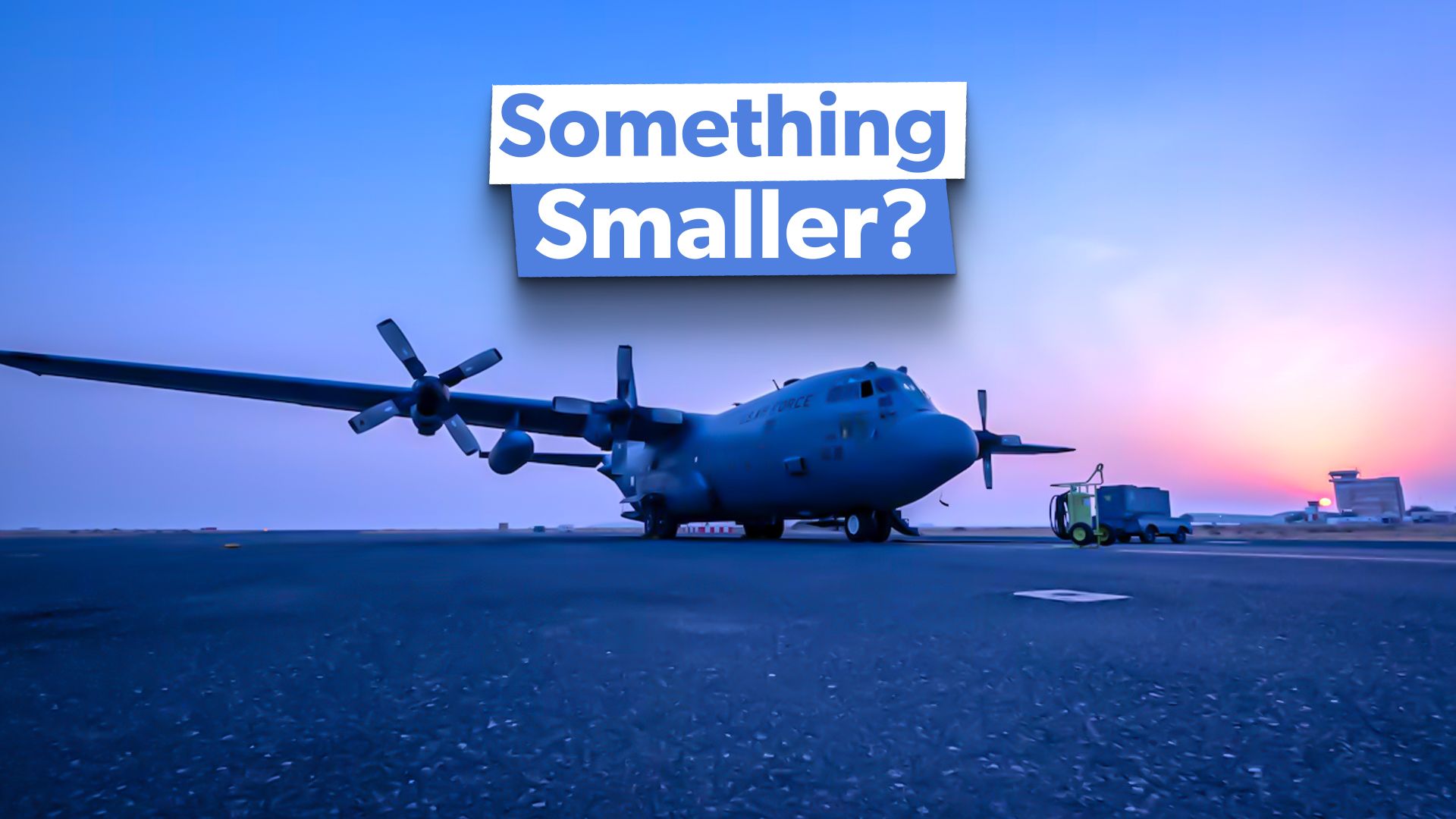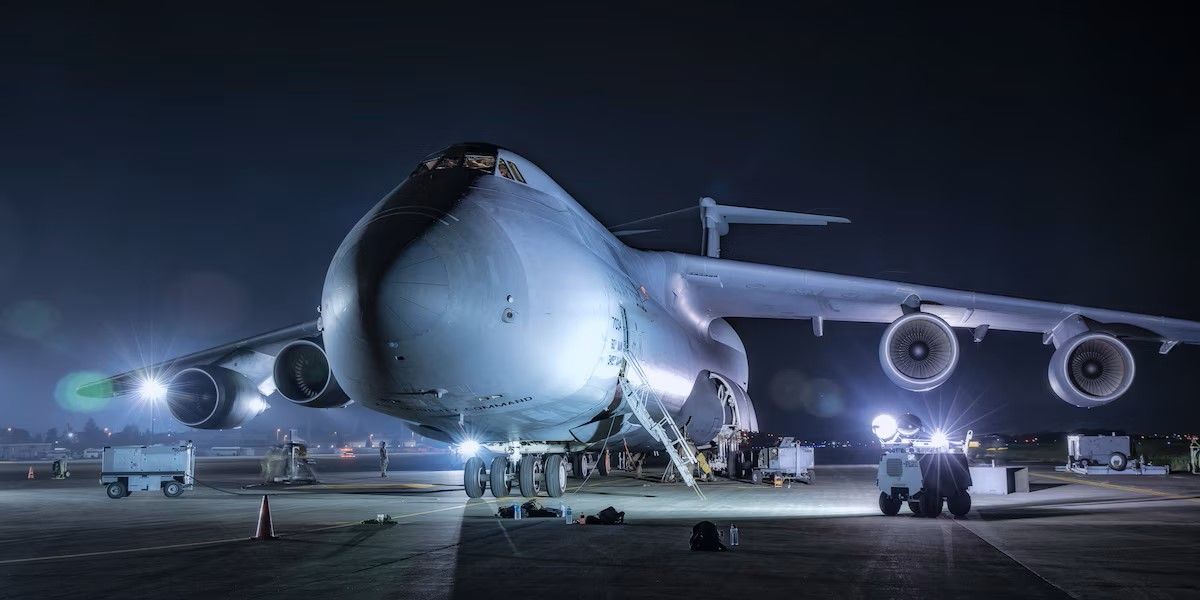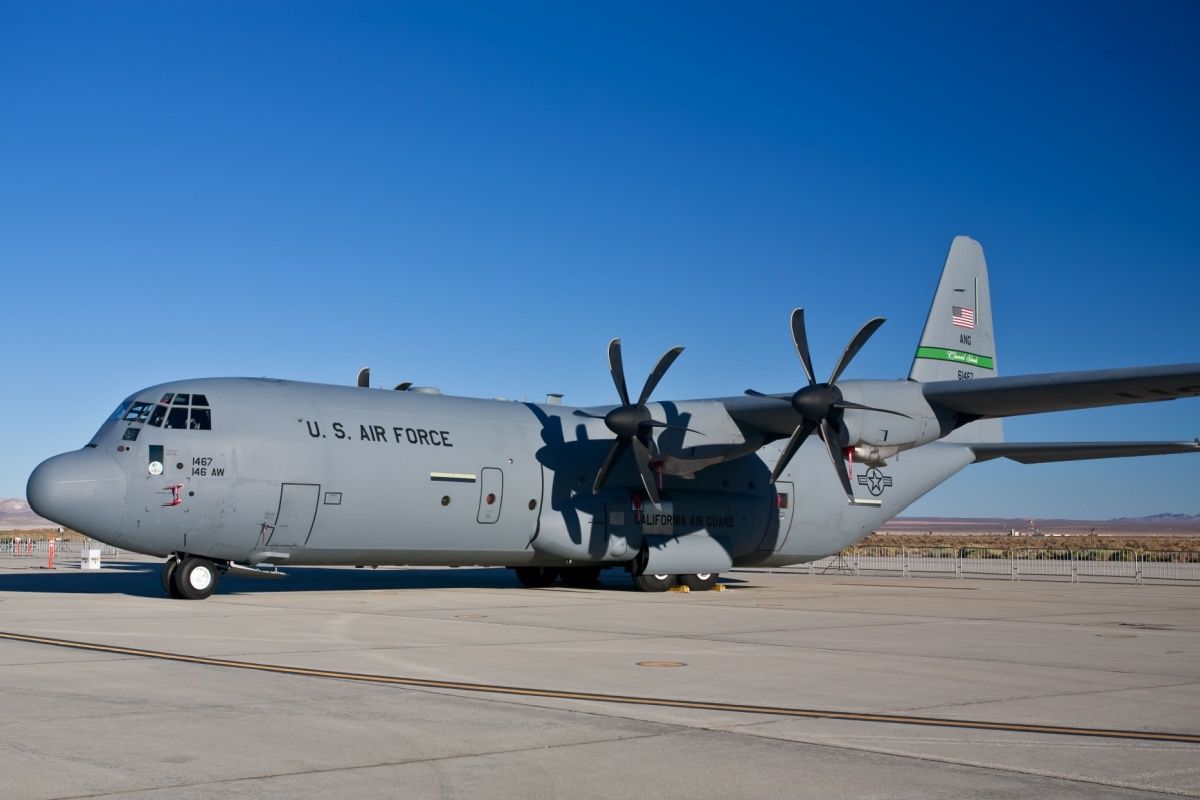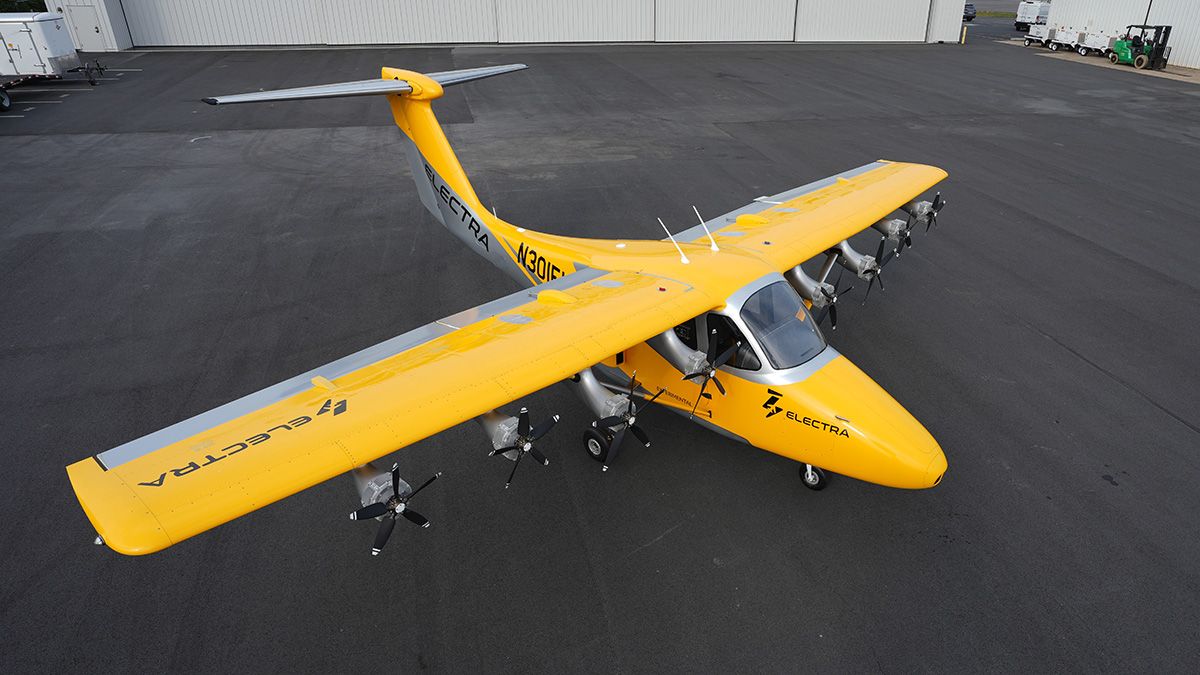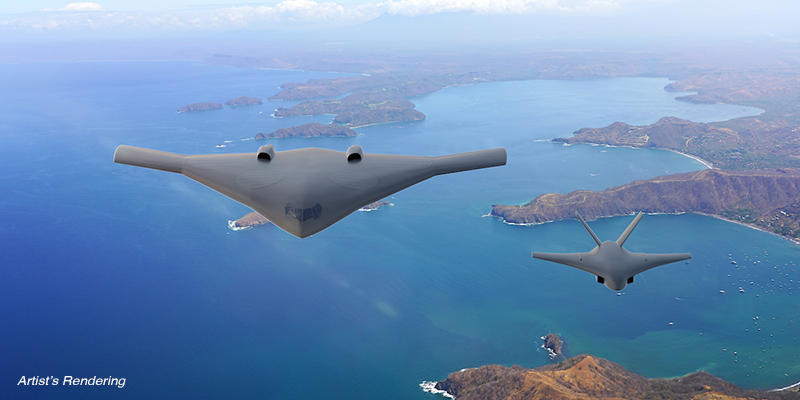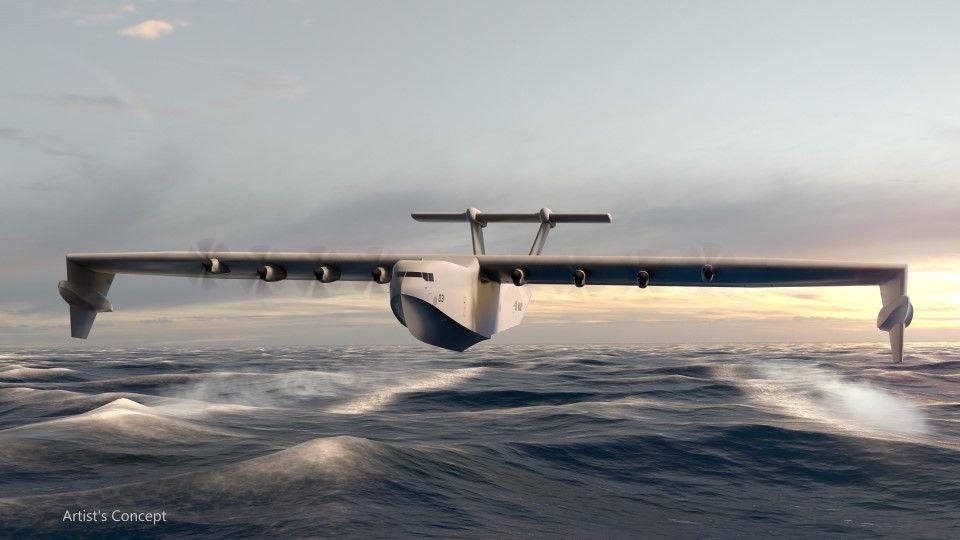The
United States operates large airlifters like the C-17 Globemaster III
and the C-5M Super Galaxy. But the
workhorse of the Air Mobility Command is the tactical C-130J Super Hercules
(and its older Hercules relative). But as threats change and the US is ever-more focused on a war with China
, the Air Force
is now looking for something smaller.
US Air Force wants a small airlifter
Large aircraft are great until they break down or become too vulnerable to be viable. They are also excessive if only a small amount of supplies are needed urgently. Even the Hercules is considered too large and not numerous enough to keep the military supplied in forward bases in a future war.
The United States Air Force
is considering using an uncrewed transport. Aviation Week states that the Air Force wants a small, autonomous, electric-powered aircraft capable of short takeoffs and landings and numbering in the hundreds.
“In March last year, Pacific Air Forces commander Gen. Kenneth S. Wilsbach suggested that an uncrewed airlifter, smaller than the C-130 and closer in size to the World War II-era C-47 Skytrain, could play an important role in the Pacific theater.”- The War Zone
The
United States Air Force no longer feels safe operating from its forward airbases
. In a war with China, US airbases are likely to come under attack, and so the Air Force is now seeking to train from operating in dispersed airbases as part of an Agile Combat Employment (ACE) concept.
A return to WW2 & Vietnam
The United States built around 10,000 Douglas C-47 Skytrains during World War Two and these are credited with being one of the most important factors why the war was won. While that was a different time with different technology, the US Air Force again feels like it needs a small but numerous transport to keep forces supplied and able to fight.
|
Current USAF transport aircraft (per FlightGlobal): |
|
|---|---|
|
C-5M Galaxy: |
52 |
|
C-17 Globemaster III: |
228 |
|
C-130H Hercules: |
158 |
|
C-130J Super Herucles: |
172 |
During the Vietnam War, the US prominently used a fleet of around 150 de Havilland C-7A Caribou cargo aircraft with short take-off and landing capabilities. These aircraft were able to transport around 6 tons of cargo or 26 troops. Although the idea is to modernize it and maybe with an eclectic powered cargo aircraft.

Related
The History Of The Boeing C-17 Globemaster III Over The Years
A look at how the massive military airlift plane came to be.
Concepts of small airlifters
Next-Generation Intratheater Airlift (NGIA)
The Air Force is now in the market research phase for the Next-Generation Intratheater Airlift (NGIA) concept. Prototyping may begin as early as fiscal year 2026, with engineering and manufacturing development beginning in the early 2030s.
“The Department of the Air Force’s (DAF’s) goal is to enhance existing airlift capability and capacity with an intra-theater platform that can fight through damaged infrastructure on responsive timelines. The primary mission will include intra-theater airlift to support Agile Combat Employment (ACE) for both cluster-to-cluster and intra-cluster movement of cargo and personnel to/from unimproved surfaces and/or damaged runways.” – Air Force Next Generation Intra-theater Airlift (NGIA) Request for Information (RFI)
Photo: Photo: Eugene Berman l Shutterstock
The NGIA would also be able to provide joint support, forward area refueling point (FARP) operations, rapid force projection, and non-traditional base defense. The Air Force is prioritizing the platform’s ability to perform short to very short takeoffs and landings.
Air Force’s “Last Tactical Leg” airlifter
Aviation Week noted the NGIA concept builds on the Air Force’s “Last Tactical Leg” airlifted proposal (which is expected to be in the prototyping stage between 2026 and 2030). The Last Tactical Leg calls for an uncrewed hybrid-electric, short- or vertical-takeoff and landing aircraft that would be able to deliver small and urgently needed supplies to the forward bases from logistics hubs. These would be able to operate in war zones where runways have been damaged on both ends.
Electra.aero’s eSTOL
Photo: Electra.aero
Electra, for example, is already designing a “hybrid-electric, short takeoff and landing (eSTOL) aircraft designed to make regional air mobility more accessible.” While its focus is commercial, it could also have military applications. The aircraft would be able to carry nine passengers or 2,500 lbs. of cargo.
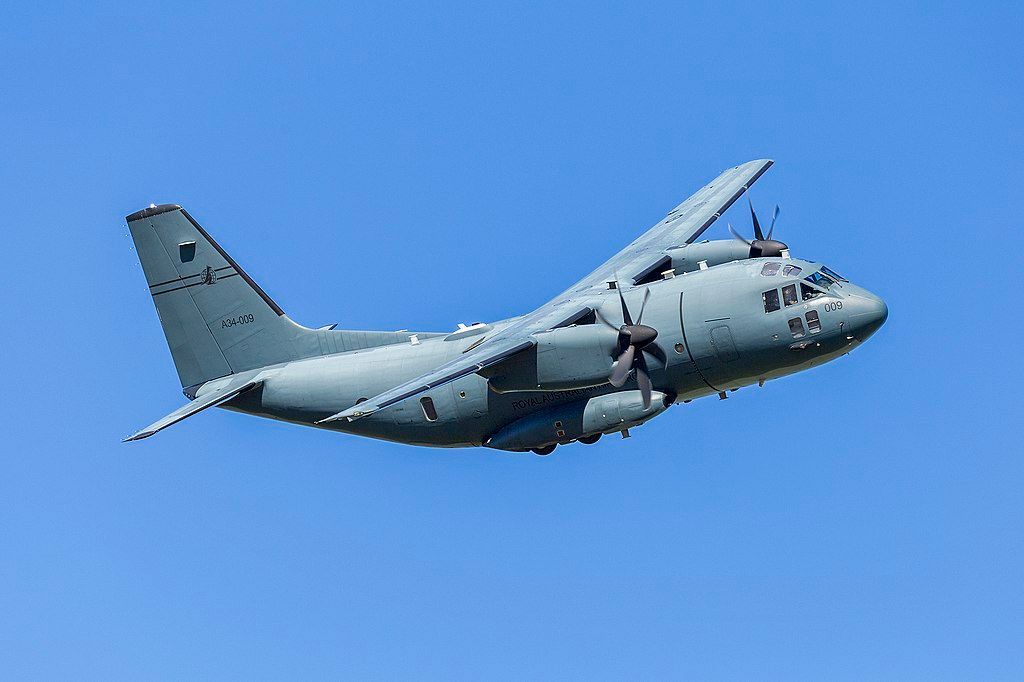
Related
Alenia C-27J Spartan: The Italian Military Transport Plane Flown As Far Afield As Australia
The Spartan is deployed by 18 air forces around the world, including the Royal Australian Air Force
Other new airlifer concepts
Jetzero’s blended wing
The US Air Force is working to tackle its airlifted requirements in a number of other ways. The startup company,
JetZero, is working on developing a blended-wing aircraft that will dramatically improve fuel efficiency
Boeing’s Aurora X-plane
Photo: Aurora
Aurora is working on designing a blended wing airlifer that would be able to take off and land vertically while also being stealthy. The X-plane fan-in-wing technology would provide vertical lift for US airborne logistics without needing a prepared runway. But Aurora is not alone. The X-plane is being developed as part of the Speed and Runway Independent Technologies (SPRINT) project and Bell Textron, Inc. is also competing with its own design.
Liberty Lifter ekronoplan
Photo: DARPA
|
Proposed Liberty Lifter specs: |
|
|---|---|
|
Speed: |
180 knots |
|
Payload: |
180,000 lbs |
|
Wingspan: |
approx. 200 feet |
|
Cruising altitude: |
approx. 100 feet |
|
Powerplant: |
8x 5,000 hp engines |
Another novel idea being worked on is
the ground effect (ekranoplan) Liberty Lifter
, which would blur the line between a ship and a plane. Using ekranoplans is nothing new (the Soviets developed them), but engineers have never been able to overcome the considerable engineering difficulties to make the design transformative.

